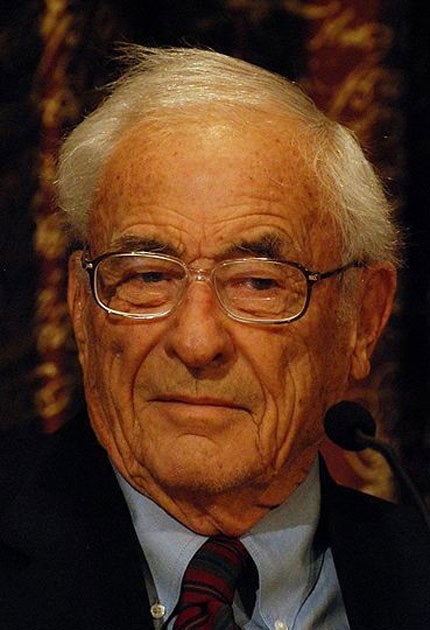Willard Boyle: Nobel Prize-winning physicist known as ‘the father of the digital camera’

Willard Boyle and George Smith, "the fathers of the digital camera", shared the 2009 Nobel Prize for Physics. By creating the imaging technology, the "eyes" at the heart of digital cameras, Boyle and Smith helped to launch the digital imaging revolution.
The charge-coupled device (CCD), which allowed engineers to store a visual image in digital form, revolutionised consumer electronics and had a profound effect on astronomy and space science. CCDs are found in a range of products from point-and-shoot cameras, camcorders and smartphones to barcode readers, photocopiers and medical imaging devices. They can also be found in the Hubble space telescope. "It wouldn't have been possible without our invention," Boyle observed. In its Nobel citation, the Royal Swedish Academy of Sciences said, "These inventions may have had a greater impact on humanity than any others in the last half-century."
Like many great ideas it came about serendipitously. In October 1969, Boyle and Smith were looking to develop a new memory device for computers. Within an hour they had come up with the rudiments of the CCD. CCD technology makes use of the photoelectric effect, as theorised by Einstein and for which he won the 1921 Nobel Prize. When light strikes a piece of silicon it knocks electrons out of their orbits; these can be captured, and the CCD transforms light into digitised image points, or pixels, similar to the way a transistor handles sound. Boyle and Smith's breakthrough was devising a way to read the number and location of electrons captured. In a 10x10 array, for example, the data is converted into a chain of electron concentrations 100 pixels long. This can be converted back into visual information.
The pair created a digital camera in 1970, and two years later an American company produced the first digital camera with a 100x100-pixel photosensor (10,000 pixels in total, small by modern standards); the late 1980s saw a second generation with 1m pixels. It was not until 1981 that Sony produced the first prototype digital camera, the Mavica. By 1975, Boyle and Smith had also produced a video camera with image quality suitable for television.
Boyle recalled that they thought the CCD "might have some applications," but never conceived how it would help shape the modern world. Before long, some university astronomy departments were using it in their telescopes, and the invention came to the attention of Nasa, who saw the potential of CCD-imaging systems as an alternative to the bulky, vacuum tube-based cameras used on missions.
Boyle remained proudest of the CCD sensor's applications in astronomy. "We saw for the first time the surface of Mars," he said.
Willard Boyle was born in Amherst, Nova Scotia in 1924 and raised in the nearby village of Wallace. When he was three the family moved to Chaudière in northern Quebec, where his father served as doctor for a logging camp; Boyle was home-schooled in a log cabin by his mother, a nurse, to whom he attributed his interest in science.
He enrolled at Montreal's McGill University but in 1943 he was called up to the Royal Canadian Navy. A sufferer from seasickness, he applied to the Fleet Air Arm to become a pilot and was sent to England, learning to land Spitfires on aircraft carriers; the War ended before he could see active duty.
Boyle earned his doctorate in 1950, and after a year at McGill's Radiation Laboratory and two years teaching physics at the Royal Military College of Canada in Ontario, he moved to New Jersey to join Bell Labs.
Although Boyle's greatest achievement was the CCD, he made a number of other contributions to laser technology, including the first continuously operating ruby laser, which he invented with Don Nelson in 1962. He was also awarded the first patent (with David Thomas) proposing a semiconductor injection laser. Today, semiconductor lasers are at the core of all compact disc players and recorders.
In 1962, Boyle became Director of Space Science and Exploratory Studies at Bellcomm, a Bell subsidiary providing technological support for the Apollo programme, helping work out lunar landing sites. In 1964, he returned to Bell Labs to work on developing electronic devices, particularly integrated circuits, building blocks in telecommunications and electronics.
In retirement, Boyle served as adviser to governments and universities, as well as sailing and skiing.
Willard Sterling Boyle, physicist: born Amherst, Nova Scotia, Canada 19 August 1924; married Betty Joyce (one son, two daughters, and one son deceased); died Wallace, Nova Scotia 7 May 2011.
Subscribe to Independent Premium to bookmark this article
Want to bookmark your favourite articles and stories to read or reference later? Start your Independent Premium subscription today.

Join our commenting forum
Join thought-provoking conversations, follow other Independent readers and see their replies